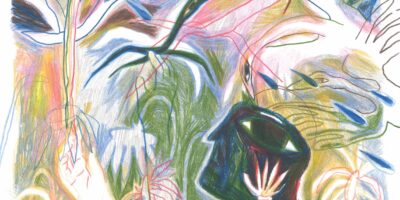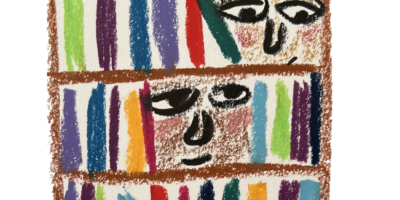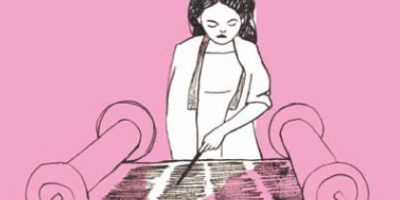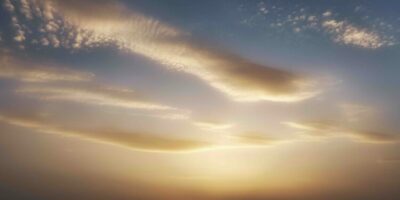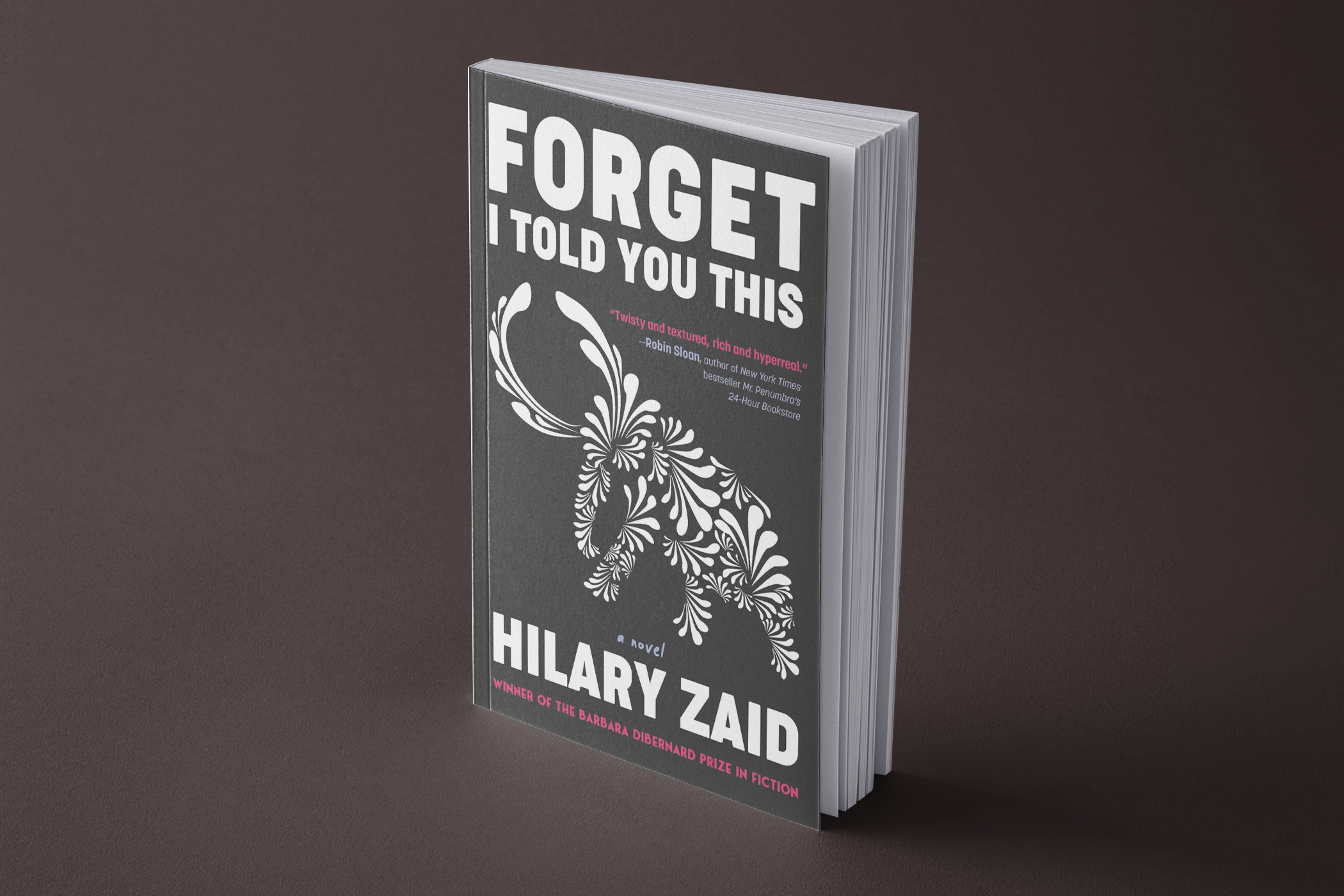
The Dystopian Now
Hilary Zaid’s Forget I Told You This (University of Nebraska Press, $21.95), the inaugural winner of the Barbara DiBernard Prize from the Zero Street Fiction series has been called a literary thriller. Literary, I get: Each sentence in this novel is a gem—faceted, shimmering, gorgeous. But a thriller? True, there is tension from the beginning and a complex plot which unravels gradually, creating suspense. But the novel resists this label, in part because Zaid’s protagonist, Amy Black, is so complex. She’s a Jew, a lesbian. She’s menopausal and suffers from hot flashes, which gratefully are not played for laughs. She’s a single mother, missing her grown son, a devoted daughter and sister, and a calligraphy artist. Amy is also face blind, a condition that makes her a particularly bad sleuth. She is no James Bond: when does Bond break from his work to crush medications into applesauce and spoon feed them to his father? Or take his developmentally delayed brother to the Gap to shop for jeans? Or consider the Jewish origins of an art form?
Forget I Told You This is set in the dystopian now of Oakland, California. Amidst electricity outages, fires, the housing crisis, street crime, digital surveillance, and data mining that has obliterated the characters’ privacy, Amy pens love letters at Crimson Horticultural Rarities, a boutique that smells of spices and dirt and offers a “promise of something real”; for Amy, it is a portal to another time, “the Age of Letters, the era in which [she] should have been born.”
An encounter with a mysterious customer pulls Amy into the orbit of Q, the world’s largest social media site—and into the path of a group of vigilantes who want her help thwarting Q. Before this, Amy was vaguely concerned about Q’s activities. But she’s been distracted by Q’s coveted Artist Residency, and the opportunity it offers to be recognized. What Amy discovers at Q will challenge her beliefs and choices; to ask the very Jewish question of her responsibility to the larger good.
Zaid is adept at describing place, and at the same time projecting Amy’s outsider position. Entering the Q compound, Amy observes the many tech bros swarming in alongside her “like an army of pale, thin Oompa Loompas disappearing behind the factory gates. The air even swirled with the smell of melted chocolate—chocolate and coffee. The warm, rich smells…sent me marching after them with more confidence than was rightfully mine, past bistro cafés, the dry cleaners, and the barbershops that lined the Q quadrangle like the square of a small village, into the shining glass and chrome entry tower.”
Once, inside, Amy is struck by Q’s halls which resemble a world renowned museum. A mammoth skeleton, purchased at great expense by Hack, the wunderkind behind Q, hangs over the entryway, for instance. Deeper inside and more essential to the novel is the Library of Books That Don’t Exist. Amy observes that “the entire room was ringed with glassed booths…a hive of robotic worker bees in their cells all transforming the pollen of books and pages into some kind of rich, digital honey.” Here, Amy sees Q’s newest treasure, the Codex Argenteus, the Silver Bible from 526 c.e. While the Bible went missing for a thousand years and nearly half the pages were missing when it was found, in Q’s library, all the pages have been brought together. Amy is struck by the beauty of the page she sees: the silver and gold letters “sparkling against the purple depth of parchment were moon- light and stars on the surface of the sea.”
While the beauty of the Codex initially suggests to Amy that Q isn’t as bad as the vigilantes would have her believe, she comes to understand that Q’s ownership of the Codex has nothing to do with an appreciation for the art involved: “Hack didn’t just like rare things. He liked to own them. To collect them.” Amy also comes to understand something about her art. She doesn’t need Q’s endorse- ment to be an artist. What she needs is to devote herself to her art, despite her worry about its worth: “If we stay at our private labors long enough, if we work at the thing we love, only for the thing itself, we may finally be seen for who we are.”
Forget I Told You This is as richly layered, as lush and resonant as the bricolage Amy employs in her art. As such, I’ve had to leave a lot out of this review: a lost love, sexy interludes with another mysterious stranger, allusions to Dante, the Holocaust, and the Museum of the Extinct Race, Woolf’s Lily Briscoe, even Harriet the Spy. Call it what you will, this is a novel about art, about making it and sharing it, a love letter to art in a world that has forgotten how much we need it.
Rachel Hall is the author of Heirlooms (BkMk Press), which was selected by Marge Piercy for the G.S. Sharat Chandra Prize.


